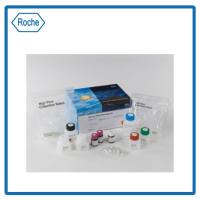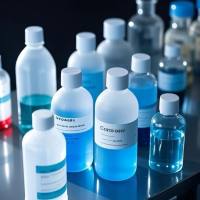Nondetergent Isolation of Rafts
互联网
387
Raft and caveolar microdomains have been proposed to participate in numerous cellular functions including signal transduction,
cholesterol trafficking, and vesicular sorting. Traditional methods of isolation of rafts from cultured cells and tissue samples
have exploited the biochemical properties of these microdomains, i.e., their relative resistance to solubilization by nonionic
detergents (at 4�C) and their light buoyant density attributable to their high content of cholesterol and sphingolipids. Thus,
a common way to isolate raft microdomains has been their separation on a density gradient in the presence of 0.5–1% Triton
X-100 (Bochringer Mannheim Roche Applied Sciences Indianapolis, IN or Sigma-Aldrich, St. Louis, MO). This and other detergent-based
methods have been discussed. However, the use of detergents may not be favorable because of artifacts that may arise with
their use. (The possibility of rafts solely as detergent-induced artifacts appears to have been diffused by a number of biochemical
and biophysical studies that strongly demonstrate the presence of a liquid-ordered phase within biological membranes.) In
this chapter, three methods are reviewed to isolate rafts from cultured cells without the use of detergents. Two of these,
the sodium carbonate and OptiPrep™ (Sigma-Aldrich St. Louis, MO) methods, are based on gradient separation and can be used
to isolate rafts in general, whereas the third is a magnetic-bead immunoisolation approach and might be used to isolate subpopulations
of rafts enriched for different markers such as caveolin-1, flotillin (reggie proteins), or other suitable markers. Together
these methods allow for a detergent-free isolation of rafts for biochemical, proteomic, and microscopic studies.









